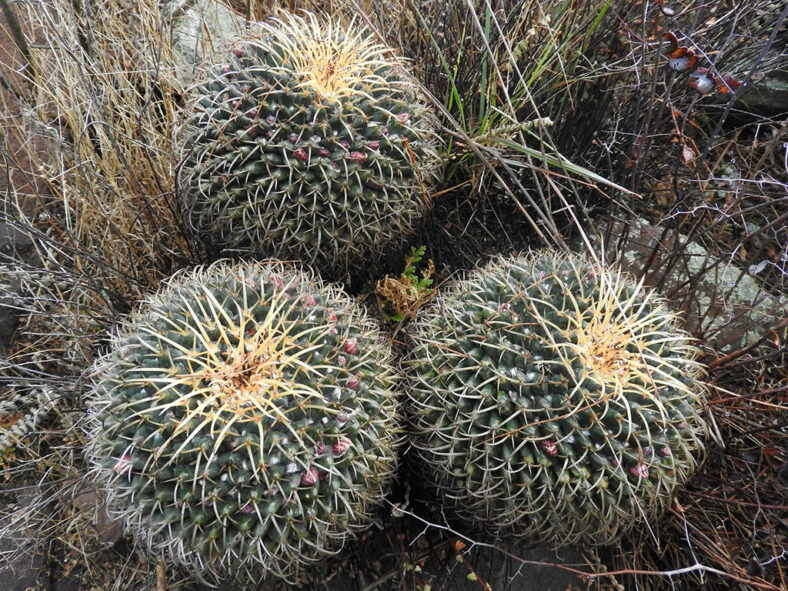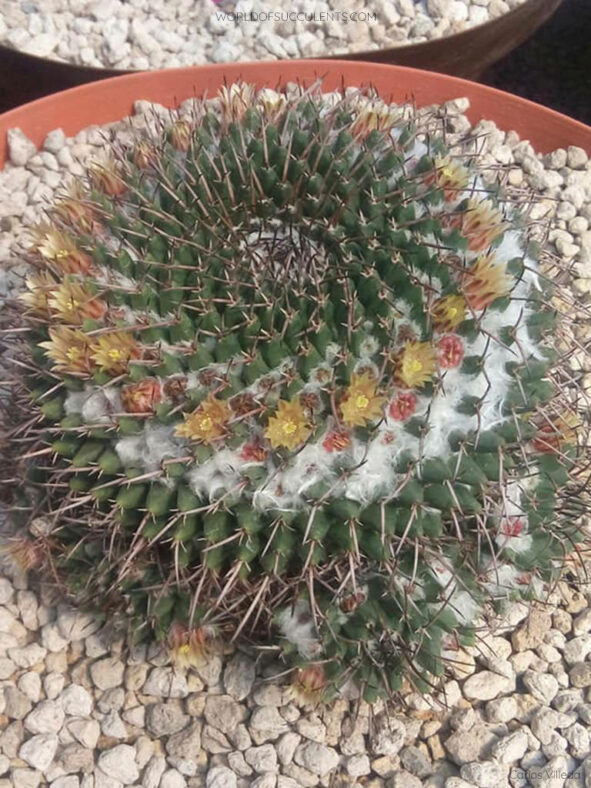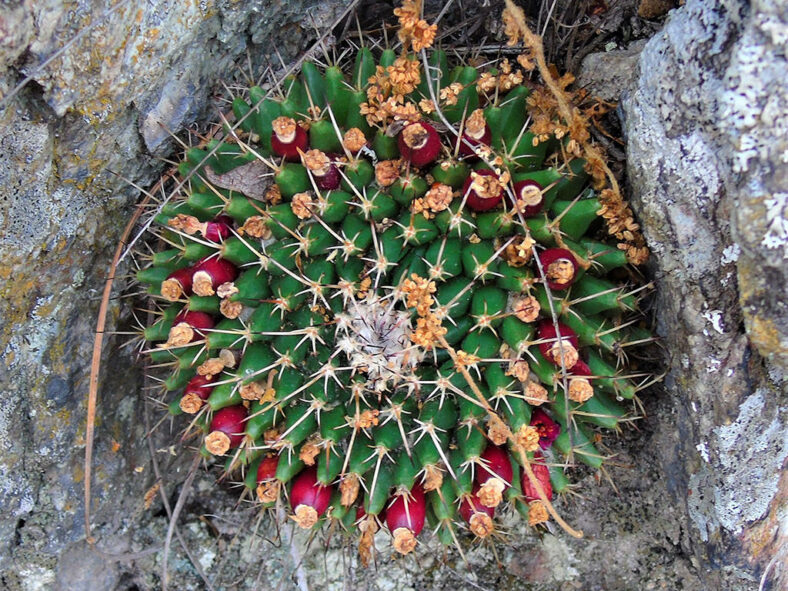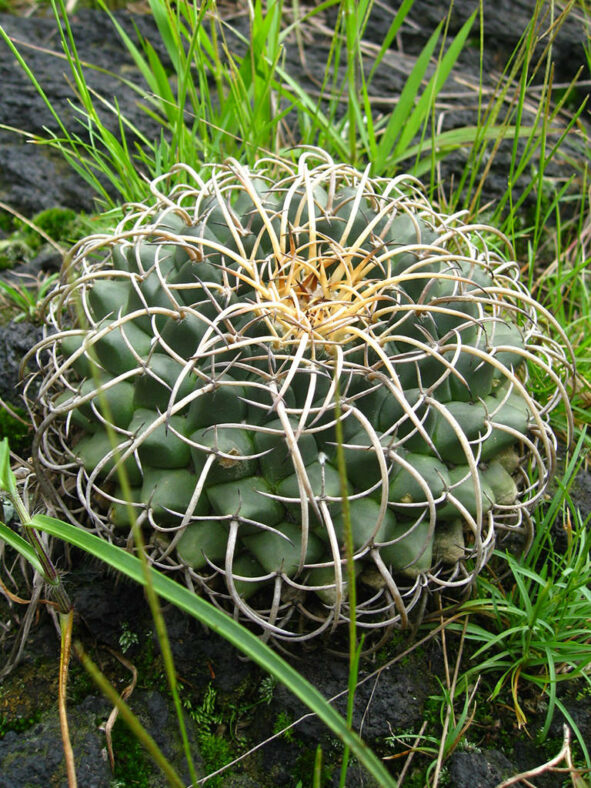Mammillaria magnimamma is a highly variable species, especially in spination.
Scientific Name
Mammillaria magnimamma Haw.
Common Name(s)
Mexican Pincushion, Mexican Pincushion Cactus
Synonym(s)
Cactus magnimamma, Mammillaria centricirrha f. magnimamma, Mammillaria centricirrha var. magnimamma, Neomammillaria magnimamma
Scientific Classification
Family: Cactaceae
Subfamily: Cactoideae
Tribe: Cacteae
Subtribe: Cactinae
Genus: Mammillaria
Etymology
The specific epithet "magnimamma" (pronounced mag-nih-MAM-muh) means "large nipple" and refers to the tubercles that cover the stems.
Origin
Mammillaria magnimamma is native to Mexico. It is widely distributed in the semi-arid central Mexico region and the western and southwestern parts of the Sierra Madre Oriental Mountain range.
Description
Mammillaria magnimamma is a small cactus that initially grows as a solitary spherical stem but gradually develops into a dense clump of multiple stems as it matures. The stems are grey-green to bluish-green and covered with four-sided tubercles, dense white wool at axils, and spines at the tip of each tubercle. They can grow up to 12 inches (30 cm) tall and 5.2 inches (13 cm) in diameter. The spines are unequal, whitish to yellowish, with dark tips, measuring up to 2 inches (5 cm) long. Each areole typically bears 1 to 6 radial spines, sometimes more, while the central spines are absent.
In spring, the funnel-shaped flowers form a ring below the apex of each stem. The flower color can range from light yellow to deep pink, usually with a darker streak down the center of the petals. The fruits are club-shaped, dark purplish-red, and contain tiny brown seeds. They can grow up to 0.8 inches (2 cm) long.

How to Grow and Care for Mammillaria magnimamma
Light: For optimal growth of your Mammillaria magnimamma, ensure it is planted in an area that receives at least four hours of direct sunlight daily. If growing indoors, placing the cactus near a bright window is best to ensure it gets enough light. It is advisable to keep it on the balcony or in the garden from spring to fall for additional light.
Soil: To ensure good root aeration and drainage, use commercial cactus soil or create your own well-draining soil mix.
Temperature: Mammillaria magnimamma is heat tolerant but is not a cold-hardy plant. It grows best in USDA Plant Hardiness Zones 9a to 11b, with average minimum winter temperatures ranging from 20 to 50 °F (-6.7 to 10 °C).
Watering: Water deeply from spring to fall, and wait until the soil dries out before watering again. Never let your pot sit in water, and suspend watering when the plant goes dormant in the winter.
Fertilizing: During the growing season, Mammillaria magnimamma benefits from fertilizing. Apply a water-soluble fertilizer for cacti and other succulents. Suspend feeding during the winter when the plant goes dormant.
Repotting: Repot the cactus every two or three years into a slightly larger pot, preferably during late winter or early spring. However, repotting can be done at any time of the year.
Propagation: There are two easy ways to propagate Mammillaria magnimamma: by seeds or by dividing offsets. The best time to remove offsets is in spring and summer. Sow the seeds in late spring or summer for the best results.
Learn more at How to Grow and Care for Mammillaria.
Toxicity of Mammillaria magnimamma
Mammillaria magnimamma is non-toxic but has sharp spines, so keep it away from children and pets.
Links
- Back to genus Mammillaria
- Succupedia: Browse succulents by Scientific Name, Common Name, Genus, Family, USDA Hardiness Zone, Origin, or cacti by Genus
Photo Gallery
Click on a photo to see a larger version.


